The woman who ran out of Pak 'n Save without paying, pushing a shopping trolley filled with plastic food wrap, yelling a promise to "sort it out later".
The look of shock on the faces of first responders, especially the younger ones, and their stoicism.
The sight of ambulance officers comforting a young boy, separated from his parents.
More than six months on from the December 9 eruption of Whakaari - these are the memories that linger with the key players who, in their various roles, had to deal with one of the worst single event losses of life in New Zealand.
For Prime Minister Jacinda Ardern, who was preparing for her weekly post Cabinet press conference, the initial information about the eruption was "brief and scarce".
"But even at that early stage I did get a real sense of the immense scale and the impact it would have," she says.
"The now iconic images of the eruption and immediate effort underway will always stick with me."
 Prime Minister Jacinda Ardern leaving Whakatāne fire station after meeting talking to first responders on the day after the eruption. Image: Stuff.
Prime Minister Jacinda Ardern leaving Whakatāne fire station after meeting talking to first responders on the day after the eruption. Image: Stuff.
Ardern says she made the decision to travel to Whakatāne in order to assist and help coordinate efforts on the ground.
"It was deeply important to me to meet with and hear from our frontline people as soon as possible about what they needed from us as Government, particularly with something so precarious and difficult to predict as a volcanic eruption."
She says one story she heard particularly stands out for her now, almost six months on from the tragedy.
It was the day after the eruption and Ardern, accompanied by Whakatāne Mayor Judy Turner and East Coast MP Kiri Allan, met with emergency staff and first responders at the Whakatāne Fire Station on Commerce Street.
"A first responder who was pretty new on the job. She was one of the first on the boat looking after people who had suffered horrific injuries. She was stoic, but I can't imagine what that would have been like."
Ardern described it as a privilege to meet the Kiwis who had rushed to assist the injured.
"That day was particularly moving.
"What I was struck with, was the overwhelmingly 'New Zealand” attitude of just doing what was required to help those in need, whatever it took, despite any personal toll it may have taken on them working in such conditions or seeing so much pain. I also felt the significant impact on the tightknit local community, they were all grieving together."
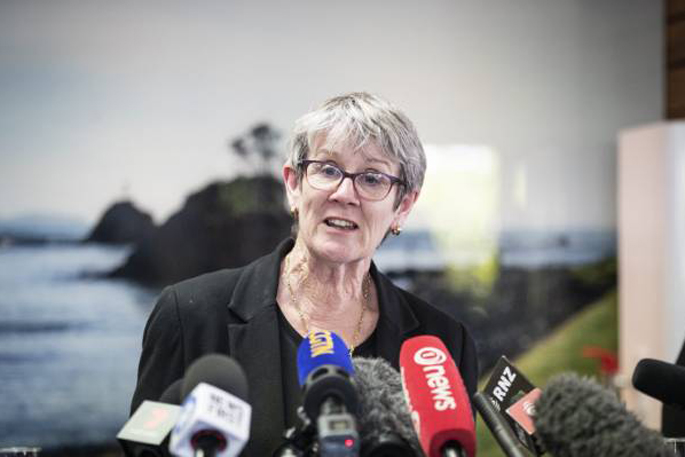 Whakatane mayor Judy Turner says when she reflects on the events of December 9 now, it's as a mother and grandmother, more than a Mayor. Rosa Woods/Stuff.
Whakatane mayor Judy Turner says when she reflects on the events of December 9 now, it's as a mother and grandmother, more than a Mayor. Rosa Woods/Stuff.
For Whakatāne Mayor Judy Turner, that Monday began out of the district on a two-day retreat with councillors.
Then a senior staffer received a call, "a little vague initially".
It was on the drive back to Whakatāne that Turner's phone "went ballistic".
Turner says it was only when she arrived at the emergency centre that had been set up the true scale of the disaster became clear.
"Even then the details were sketchy.
"Quite a chaotic scramble. Confirming where people were, who was alive, do we have an ID on that body. We've had our fair share of civil defence emergencies, but nothing with quite such a high number of deaths."
Turner says that by the next day a fuller picture of what had happened was beginning to emerge, and she also found clarity in staking out a clear definition of her role.
"My role is to speak to the heart of how people are feeling."
Turner also spoke movingly of a visit that day, with Ardern, to Whakatāne's emergency department to speak to staff.
"These people had been through a 12-24 hour period that has been horrendous. These people saw things, some pretty horrendous things they'll never forget."
She's admits too that the impact of those days has changed for her personally over the intervening months, saying "the impact is often a delayed thing".
"I'm feeling it more as a mother, a grandmother, than a mayor."
 Kiri Allan MP and Prime Minister Jacinda Ardern embrace after speaking to emergency response staff the day after the Whakaari eruption. Image: Stuff.
Kiri Allan MP and Prime Minister Jacinda Ardern embrace after speaking to emergency response staff the day after the Whakaari eruption. Image: Stuff.
Kiri Allan, the Whakatāne-based East Coast MP, had just landed at Wellington Airport when she received the first phone call.
She never left the airport, getting back on the next plane to Tauranga, then driving to the Civil Defence hub at Whakatāne.
Allan, Ardern and others then worked into the night "to understand the nature of this tragic event".
Asked what from those two days sticks in her mind most, Allan also refers to the visit she undertook on the Tuesday to a Whakatāne fire station for a closed door meeting with first responders.
"I remember the look of shock on the faces of so many of the first respondents, particularly some of the younger ones ... it hit me extremely hard."
She says she heard stories from hospital cleaners who took injured from helicopters to hospital and a junior doctor, just weeks into the role and "grappling with what they had just seen and experienced".
Then there was the story she heard from a young woman volunteer firefighter.
"After learning of the gravity of the burn recovery required, [she] filled an entire shopping cart with glad wrap from Pak n Save on her way over to the hospital and ran out without paying, yelling to the owners that she would 'sort it out later.'"
"Pak n Save waived the fee but that reaction epitomised the response of the whole community, everyone swung in to help in whatever way they could."
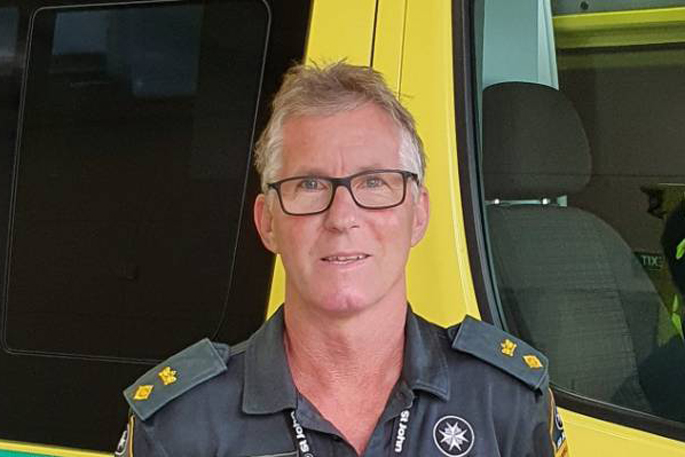 Jeremy Gooders, St John district operations manager for Central East Coast, said he knew almost immediately he'd be dealing with an incident of an unprecedented scale. Supplied image.
Jeremy Gooders, St John district operations manager for Central East Coast, said he knew almost immediately he'd be dealing with an incident of an unprecedented scale. Supplied image.
Jeremy Gooders, the St John district operations manager for the central east coast, was in his Tauranga office when he first saw the news. Then his pager and phone sprang into life.
Jeremy says it was obvious to him almost immediately that he would be dealing with an event of a scale he had never had to cope with before.
He says five helicopters and five ambulances were initially sent to the scene, and local ambulance staff had already arrived at the wharf "performing critical, life saving interventions".
In total he says that day involved 10 ambulances, seven incident managers, 11 rescue helicopters, "one of the most complex incidents in recent New Zealand history".
"Many of the patients suffered horrific, large and complex burns that required extensive treatment in order to be flown to one of the burns units in hospitals across the country," says Jeremy.
The appalling nature of the injuries, and the chaotic scenes at the hospital, were also spelt out in the wake of the disaster by a hospital worker who described scenes of "bedlam".
"St John ambulance officers train for dealing with difficult and stressful situations and are skilled and resilient, but an experience like this can stay with someone long after the event."
One particular thing stayed with Jeremy too.
"The sight of ambulance officers comforting and reassuring a young boy who had been separated from his parents, and the high level of compassion shown by the staff working in this extraordinary situation."
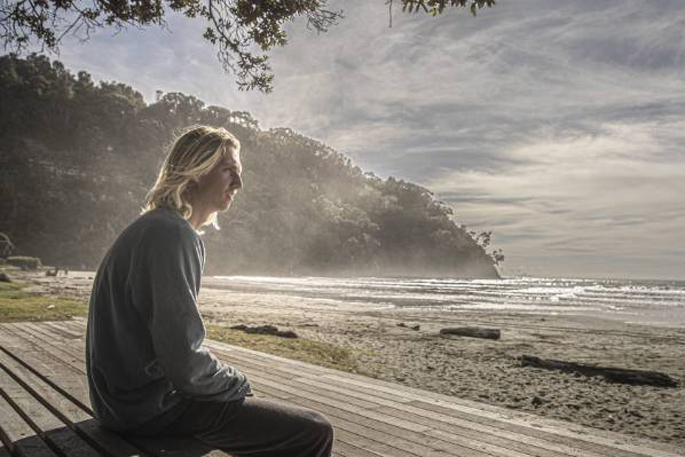 Salt Spray Surf School owner Ollie Dobbin was experiencing his best year of business yet, then Whakaari erupted, a rahui was placed on the water, then Covid-19 struck. Christel Yardley/Stuff.
Salt Spray Surf School owner Ollie Dobbin was experiencing his best year of business yet, then Whakaari erupted, a rahui was placed on the water, then Covid-19 struck. Christel Yardley/Stuff.
'We were building up for an awesome season'
For Ollie Dobbin, keeping your head above water is literally the day job.
Just 19 years old, Ollie owns and runs the Salt Spray Surf School based at Ohope Beach.
It's a business he's owned since school as he says, "once you become a surfer, you just want to find a way to surf as much as possible".
Business was good too, and he was "building up for an awesome summer".
He says that ahead of the eruption, they had seen a doubling of business on the previous year.
Then Whakaari erupted, a Rahui was placed on the water from December 10 to December 21, and lastly COVID-19 struck, all events shattering what is peak season for his business.
Stuff caught up with Ollie on the first day of the looser Level 2 restrictions, meeting at his 'office', a small council reserve at the end of West End Roadd.
He points to a patch of slightly dried out grass, where his tent is usually located.
It's a sunny and warm autumn day and the beach is littered with dog walkers and joggers. There are families carefully watching as young children run into, and quickly out of, the approaching waters.
A man is sat on the seats just before the sand starts, tapping away at a small steel drum and conversing with passersby, and all the while on the horizon to our left, Whakaari silently exhales a steady plume of steam and gas into the air.
Ollie is friendly and engaging company, and with his long blonde locks and surfboard laden camper van, looks every inch the surfer.
But he's a businessman too. We talk about accessing wage subsidies for staff, insurance costs and the relief fund established to assist businesses hit in the wake of the eruption.
Ollie is one of 23 successful applicants to that fund.
"The process seemed fair, but you definitely had to justify it."
He's clear he's luckier than many other businesses at the moment. He doesn't have rent to pay to a landlord, building costs, electricity bills.
On the flip side however, he has a very small window to make his money.
October to April is when, as he puts it, "we make our hay".
He saw the first drop off immediately after the eruption, the "high end" tourists whose itinerary also included a visit to Whakaari. He'd also pick up business on days when the weather was too rough for the boat trip to the island, so that went too.
It was the Rahui that really hurt though, as his relatively short window to earn makes two week's worth of money "critical".
Ollie first knew the eruption had taken place, via a five-word text from a member of staff working at the beach.
"Something has happened at Whakaari."
Like many in the area, he has a personal connection to the tragedy too through injured guide Jake Milbank, a friend he refers to as "my direct link".
"To see him affected was quite hard, but he's a tough kid, quite optimistic."
That optimism is shared by Ollie. He notes the worst of the COVID-19 restrictions took place during his off season, and while he doesn't expect to see international visitors for a number of years, he's confident.
Can his business survive on just a domestic market?
"Being an optimist, yes."
A ten minute drive later, we're on The Strand, Whakatāne's main high street.
At first glance it could be any other bright autumn day. There are lots of shoppers wandering around, the carparks are full.
Only a closer inspection points to the new normal. The odd face mask, hand sanitiser stations outside shops, people signing in.
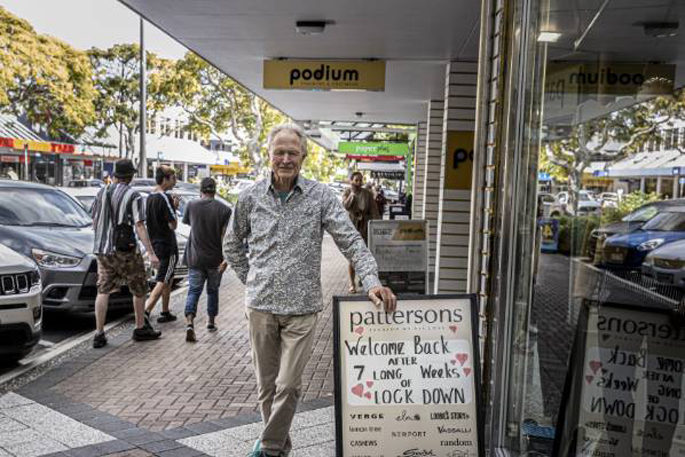 Peter Patterson says in the immediate aftermath of the eruption the town was 'in shock.' Christel Yardley/Stuff.
Peter Patterson says in the immediate aftermath of the eruption the town was 'in shock.' Christel Yardley/Stuff.
That's where we find Peter Patterson, owner of Patterson's clothing store.
"Definitely in December there was a calm over the town, the town was in shock. December trading was depressed."
January, February and March "very similar".
"We just didn't get the tourists that'd been going to White Island, and not as many holidaymakers."
He says they closed the shop for seven weeks during the COVID-19 lockdowns, a move he agrees came as a hammer blow.
But he too is optimistic about the future.
There's the dairy sector, kiwifruit, the mussel farm development in Opotiki and plans for a new container port in Kawerau.
"Which all impact on the Eastern Bay of Plenty, we look upon it as a region."
He's also grateful for a loyal customer base.
"We're well established and we enjoy tremendous loyal support."
A few metres down The Strand is Poppy's Cafe, where owner Mark Powley says he saw an immediate drop in business in the wake of the eruption.
He says the Cafes closer to the docks suffered more than they did, and he's also upbeat about a loyal customer base, and the prospects for domestic tourism.
There are dolphin charters, fishing and a beautiful town.
"We've a lot to offer in this area, if the tourism is promoted properly. We're pinning our hopes on local tourism," he says.
As we move from The Strand to some of the nearby motels, it seems we also leave some of the optimism behind.
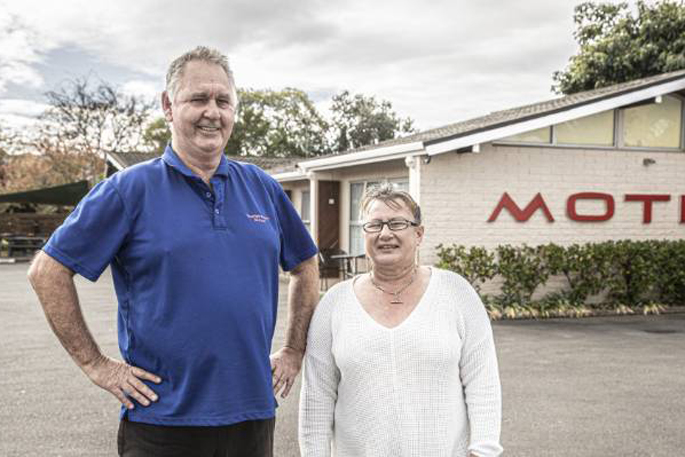 Tourist Court Motel owners John Veen and Alison Fox say they are concerned about the region's tourism pulling power without the Crown Jewel of Whakaari. Christel Yardley/Stuff.
Tourist Court Motel owners John Veen and Alison Fox say they are concerned about the region's tourism pulling power without the Crown Jewel of Whakaari. Christel Yardley/Stuff.
Tourist Court owners John Veen and Alison Fox actually saw a spike in business in the wake of the Whakaari eruption, with emergency staff and media eager to find accommodation.
COVID-19 has left them housing a smattering of homeless people, and they're uncertain about a domestic market without the crown jewel of Whakaari.
"That was one of the major draws, what's going to pull people here? It's the middle of winter, people won't come to the beaches, what's the reason to come here now," says John.
John's view is largely echoed by Eastern Bay of Plenty Chamber of Commerce president Karl Gradon.
"That [Whakari] was a valuable growth and employment engine for our tourism sector and one that we had wiped out overnight."
Alison is equally concerned that sporting events, another former draw for the region, are unlikely to resume for the foreseeable future.
A few metres down the road at the Barringtons Motor Lodge, manager Sue Burnett says they've "not a soul" staying at the moment.
She's hopeful a Trans-Tasman 'bubble' could provide a lifeline, and believes Ohope Beach will always draw visitors. Right now though, it's a case of trying to promote Whakatāne "as best as we can without White Island".
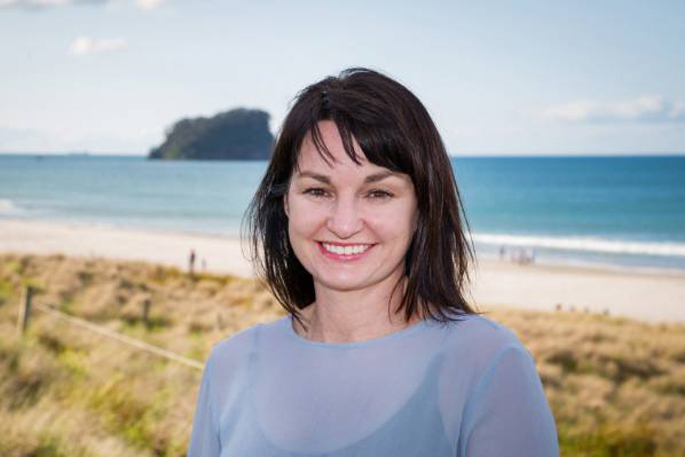 Bay of Plenty Tourism chief executive Kristin Dunne said she believed the region would feel the economic impact of that day for several years. Image: Stuff.
Bay of Plenty Tourism chief executive Kristin Dunne said she believed the region would feel the economic impact of that day for several years. Image: Stuff.
Kristin Dunne, the chief executive of Tourism Bay of Plenty, admits that Whakaari was "undoubtedly a compelling drawcard for visitors" to both New Zealand and Whakatāne.
She's candid about the damage the eruption will cause to the region's tourist sector too, saying the economic impact will be felt in Whakatāne "for several years".
Kristin says that Marketview electronic spend transaction data revealed visitor spend in Whakatāne District grew in December 2019 on the previous year, though the level of growth was weaker than other parts of the Coastal Bay of Plenty.
She says total visitor spend in the year ending December 2019 in Whakatāne stood at $147m.
They're numbers Turner described as "OK, not as high as usual but not disastrously low".
"The growing part of out tourism sector has been international, and that took an immediate hit."
Turner says data from the year ended December 2019 showed a 6.5 per cent drop in total visitor spend, and an 18 per cent fall in international spend.
She too is optimistic the region can weather the twin storms that have battered its key tourism market, but believes a new mindset may be needed.
"We will have to reimagine what the local sector looks like post COVID-19, because we all accept that life won't return to exactly what it was like before. That might not be easy, but it also provides us with a lot of opportunities."
Karl too believes there is reason for optimism.
He cites the fact Ohope is "New Zealand's most loved beach" and attractions such as the Motu Cycle Trails, Tarawera Falls, the Te Urewera and Whirinaki Forests "and all the amazing water based activities we have here have meant many Kiwis have been able to enjoy what we have on offer".
He also says they had a team in place working on Whakaari recovery efforts that they were quickly able to turn for a COVID-19 response.
"The approach of one-on-one calls to find out what is important to each business owner has been key in helping the local businesses.
"The speed to pivot towards the new market reality is critical. Creating an online presence, creating a strategy to focus on local marketplace, and quickly working out what the new consumer wants post-covid will be key. Being in a small region we have made it a focus of getting people onto the same page about the recovery efforts."
Turner says they are working with iwi, the business sector and neighbouring councils to reposition their offering, and "taking the approach that we need to reimagine the future".
She also believes their experience in the wake of the eruption can provide lessons for the country as a whole as it grapples with the global pandemic.
"One thing that Whaakari White Island taught us, was that we have something very unique to offer as a country when it comes to tourism.
"Here it is underpinned by our cultural values and the manaakitanga we show as a nation. If we can stay true to this and ensure it is also at the heart of the tourism sector as we redevelop, I believe this will offer us an incredibly strong platform to move forward with as a country."
Turner is also buoyed by the people on the front line of their tourism and business sectors, men like Ollie.
"People of passion. They're fighting to the death."
Relief fund
Just seven days after the Whakaari eruption Prime Minister Jacinda Ardern announced plans for a $5m relief fund for businesses in Whakatāne, affected by the fatal eruption and subsequent tourism drop off, and Westland, affected by storm damaged roads.
An Official Information Act request by Stuff has revealed that fund has paid out $1,875,224 to 23 businesses whose applications were successful.
In total 27 applications were made.
The largest single payout was $884,000 while the smallest sum was $2592.
'Still a bit of a mystery'
Time hasn't changed Tim Barrow's view of the events he played a role in, almost six months on.
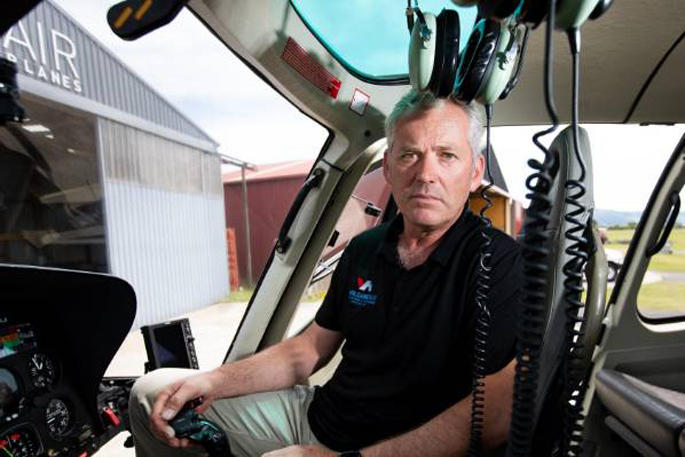 Tim Barrow, Volcanic Air Safari chief director and chief pilot, flew the last survivor off Whakaari in the wake of the eruption. Dominico Zapata/Stuff.
Tim Barrow, Volcanic Air Safari chief director and chief pilot, flew the last survivor off Whakaari in the wake of the eruption. Dominico Zapata/Stuff.
"We still see it as the awful tragedy it was. I don't think you can view it in any other way."
Volcanic Air director and chief pilot, Tim flew the last survivor off Whakaari on the day of the eruption, and he still has no idea who that person was.
"Still a bit of a mystery.”
Tim is polite, but he also admits that when it comes to discussing the events of December 9 last year, he's "a little bit over it".
"We're trying to move on."
He's confident they can move on as a business, despite what he says is a 94 per cent dependence on international visitors.
"We're working very hard to get back on track and that was happening. Post COVID-19, as a company we remain positive about our view of tourism and the Bay of Plenty region, we're keen to be here for the long term."
'Closure for families'
Local Government Minister Nanaia Mahuta, the lead for the Ministerial Taskforce on the investigation into the Whakaari tragedy, told Stuff it would be "unfair and misleading" to give any timeline for findings of the two investigations into the tragedy.
WorkSafe and Coronial probes are both underway, work Mahuta described as "quite complex".
"It would be unfair and misleading to give an indication of time.
"The priority is to ensure it's a thorough investigation."
She says she did not want to foreshadow any possible recommendations from either investigation, but "I'm sure in terms of closure for families, we are going to take things forward."
A spokesperson from White Island Tours told Stuff that while the investigations are underway "it would be inappropriate for us to comment at this time".
They did, however, say they had cooperated fully with both enquiries.
'Heightened activity'
GNS Volcanologist Dr Nico Fournier told Stuff their recent monitoring has found continued heightened activity at the site "above normal background levels for the volcano".
"It is still in a period of moderate to heightened unrest," he says.
"Activity is slowly declining towards normal levels for the volcano, although there is still very hot lava present at the surface, in the active vent area."
He says that tremor activity had decreased from December's very strong levels post eruption, and that gas emissions were also decreasing.
Nico says that despite GNS staff not setting foot on Whakaari since the eruption, their monitoring has been ongoing round the clock via instruments on the island, satellite gas measurements and GPS and satellite-based radar data.
While these remote methods let them continue data collection with minimal disruption, the lure of the dark volcanic silhouette on the horizon off Whakatane retains a strong pull not just for those who depend on showing it to tourists.
"We hope to visit the island in the future as it is important to be able to collect samples and make observations to better understand how it erupted."
Until then they, like the people of Whakatane who built lives and businesses in the shadow of Whakaari, wait.

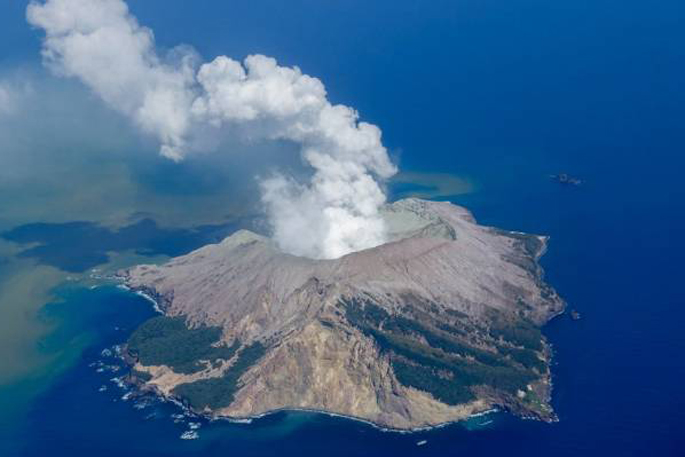

0 comments
Leave a Comment
You must be logged in to make a comment.